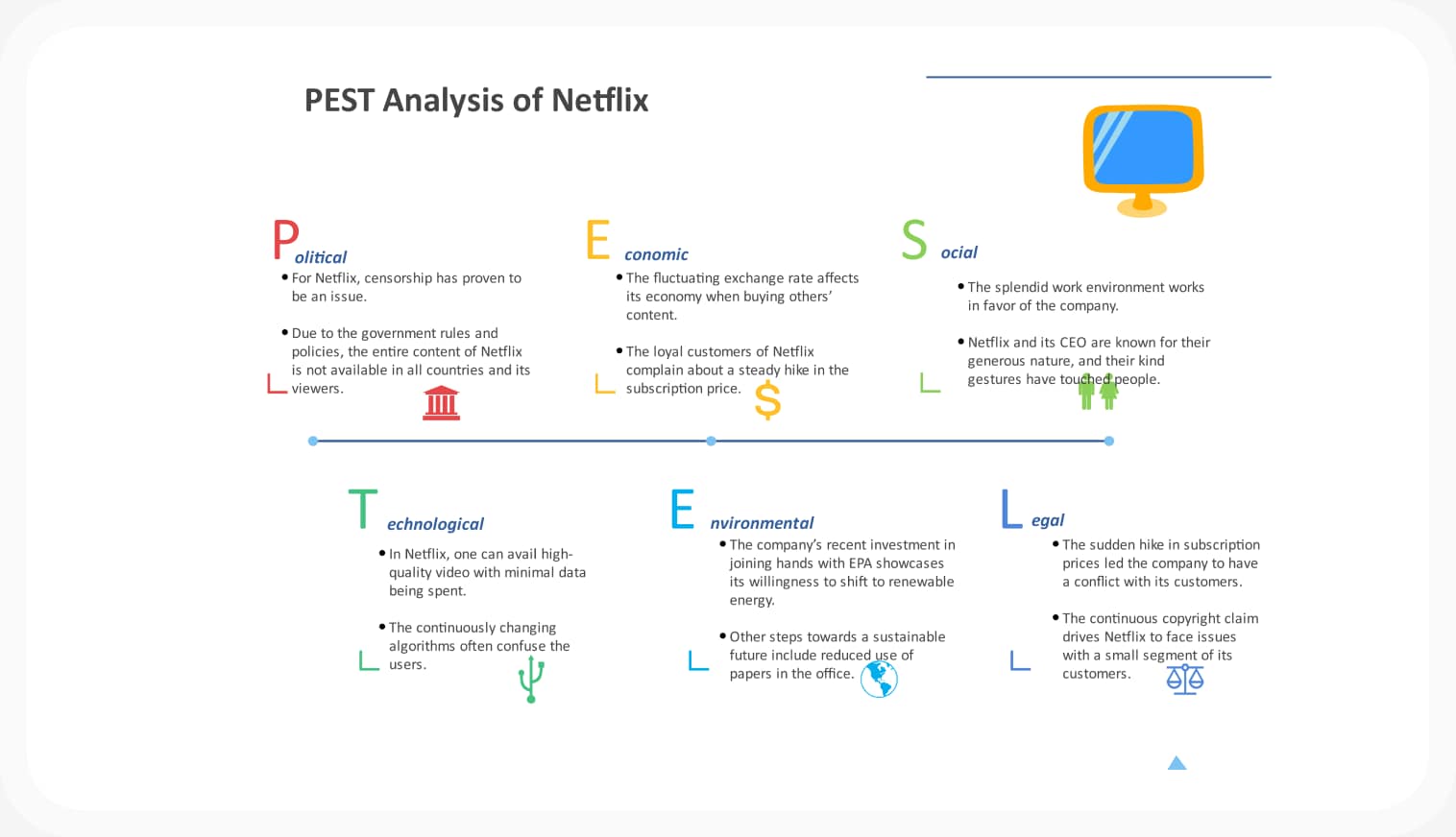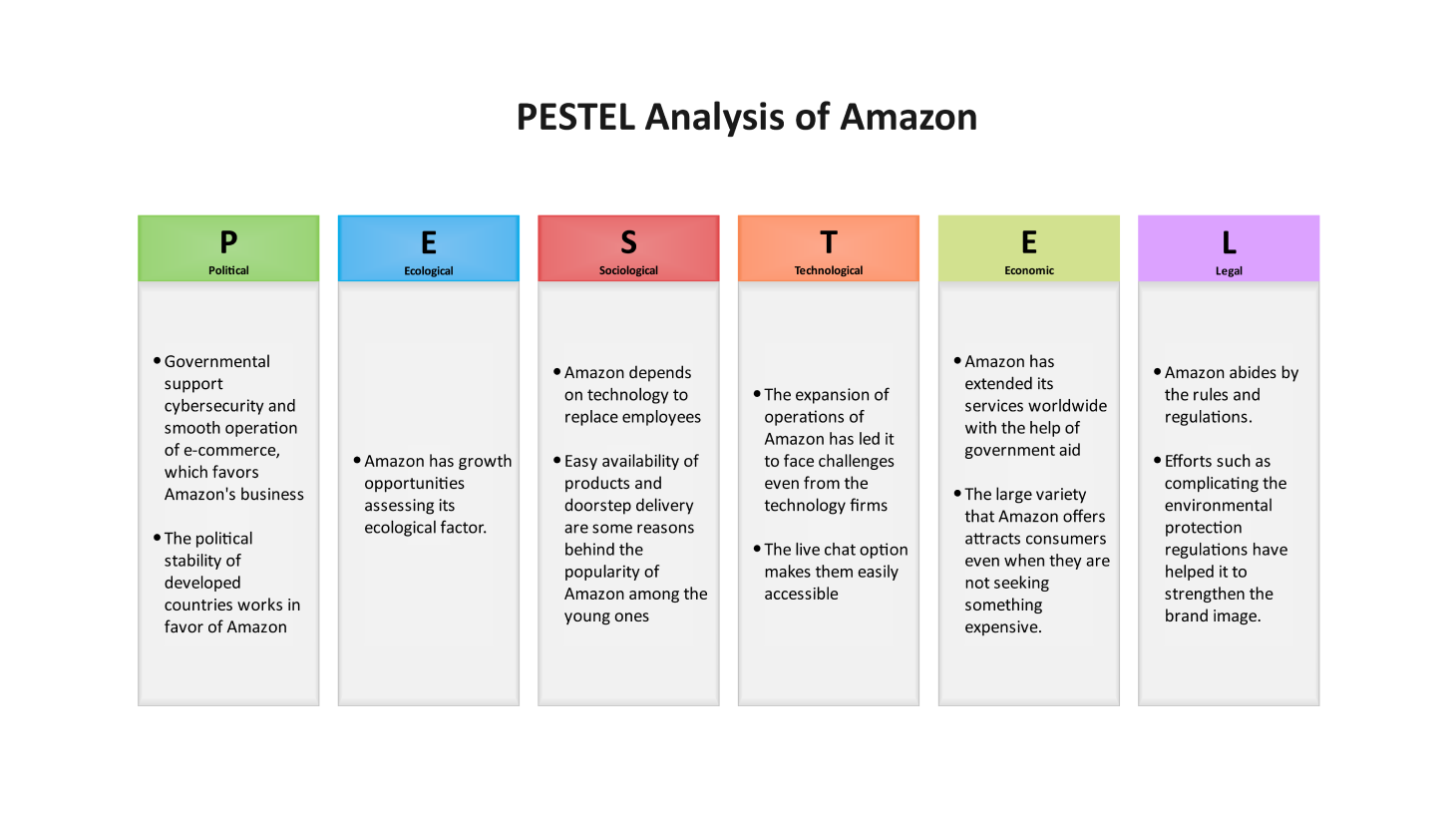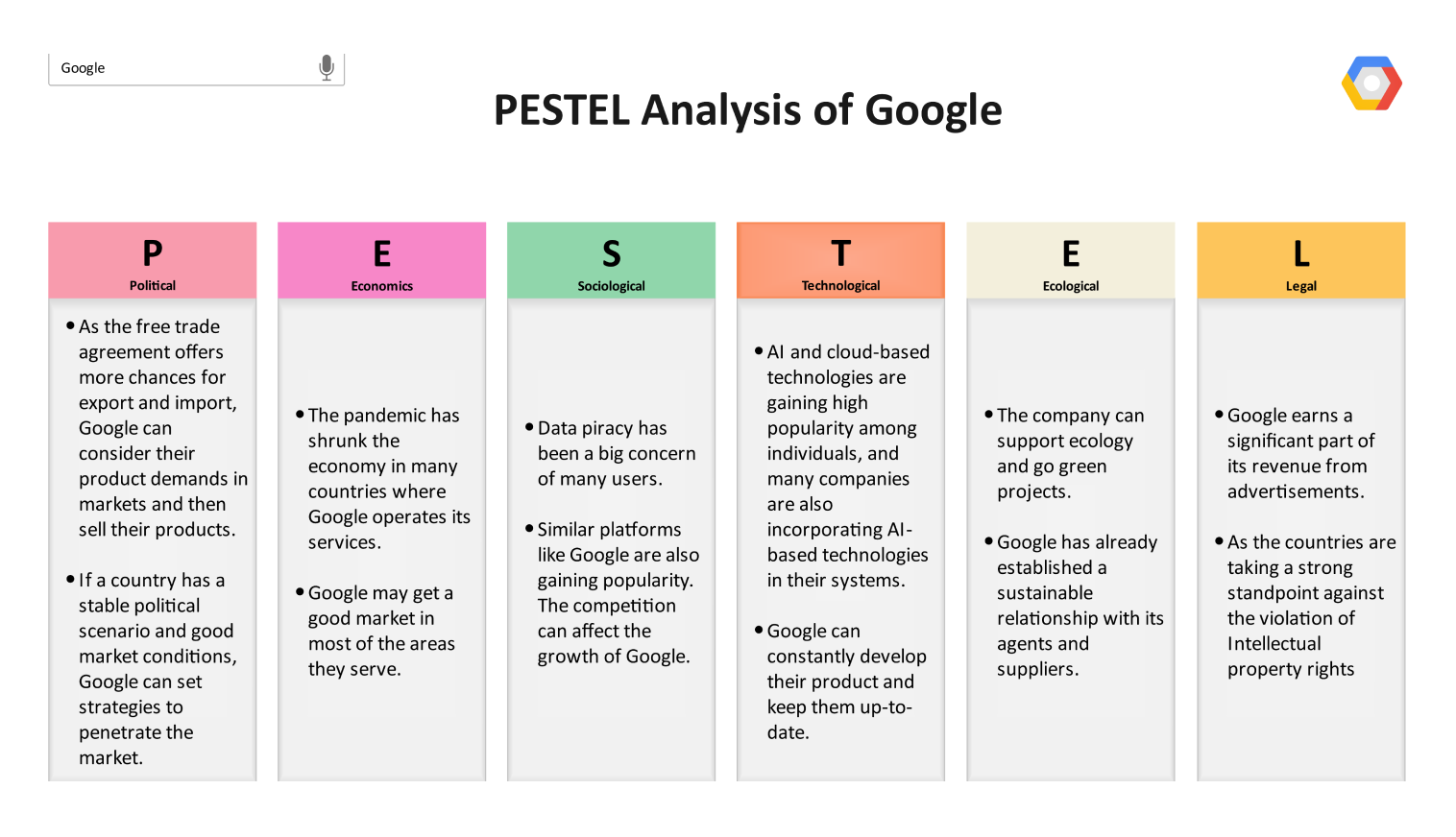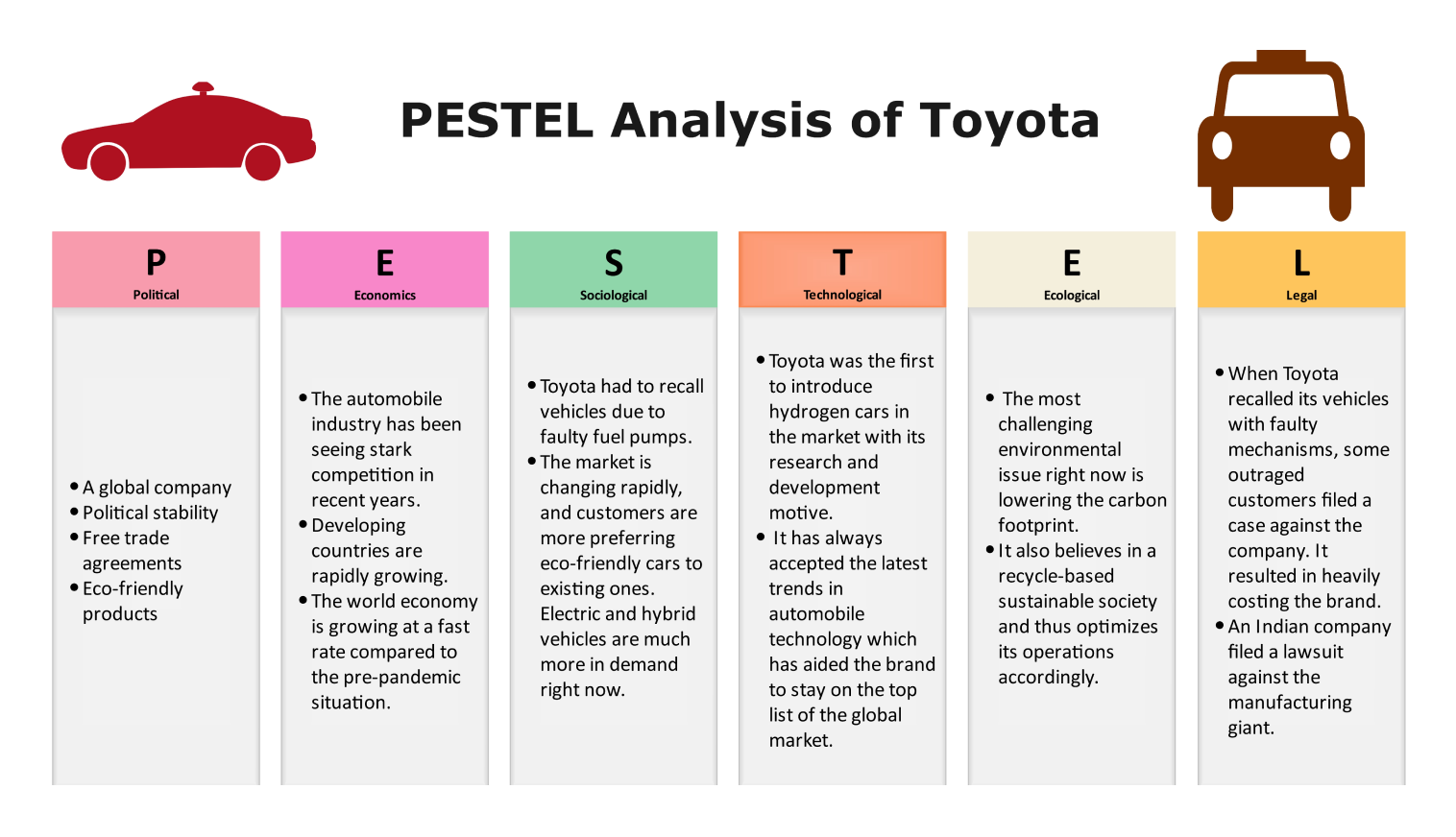- `
- All templates
- PESTEL analysis templates
- BMW PESTEL analysis
About this template
This IBM PESTEL analysis template helps you understand the external factors affecting IBM's business. The PESTEL model looks at six key areas: Political, Economic, Social, Technological, Environmental, and Legal factors.
In the political section, the template shows how government policies on digitization can create opportunities and challenges for IBM. It also highlights the importance of political support for new technologies and stricter data protection laws.
The economic section looks at the stability of major markets where IBM operates. A stable economy means more business opportunities. The template also notes the rapid growth of developing markets, which can lead to increased sales for IBM.
In the social section, the template discusses rising purchasing power worldwide. As people have more money to spend, they can afford more of IBM’s products. The template also mentions how customer service is becoming more important.
The technological section addresses how industries are integrating new technologies. IBM can help businesses adopt these technologies. The template also highlights the threat of cybercrime.
In the environmental section, the template focuses on renewable energy. More renewable energy sources are available now. IBM can use these to reduce its carbon footprint.
The legal section discusses intellectual property protections. Stronger laws can help IBM protect its innovations.
How to use this template
Go to the Templates community and there in the search bar enter IBM PESTEL analysis. Click on the Use immediately option to open the template and begin your analysis.
With the IBM PESTEL analysis template open, use the floating toolbar to customize the template's design. This toolbar provides various options for editing text, changing colors, adjusting shapes, and adding any additional elements you need.
You can easily add new sections or delete existing parts of the template. Click on the elements you want to remove and press the delete key, or use the options in the toolbar to add new text boxes, shapes, or sections.
After perfecting the IBM PESTEL analysis template to meet your needs, you can save your work in your preferred format. Use the export function in EdrawMax to convert your diagram into formats such as PDF or image. Simply go to the export option in the menu, select your desired format, and save the file to your device.
How can a IBM PESTEL analysis template benefit strategic planning?
An IBM PESTEL analysis template helps in strategic planning by organizing key external factors. It looks at political influences like laws and regulations that might impact IBM. It also considers economic factors such as market trends and economic conditions. Social factors, including customer preferences and cultural trends, are reviewed to better understand what customers want.
Technological changes are assessed to keep up with new advancements. Environmental factors ensure that IBM follows sustainable practices, and legal factors help the company stay compliant with laws. By using this template, businesses can create strategies that consider all these important external factors, leading to better planning and decision-making.
FAQs about this Template
-
How does the IBM PESTEL analysis template help in navigating complex market environments?The IBM PESTEL analysis template provides a structured approach to understanding the various external factors that shape the market environment. By systematically evaluating political, economic, social, technological, environmental, and legal influences, businesses can anticipate changes and adapt their strategies accordingly.
-
2.In what ways can the IBM PESTEL analysis template drive innovation within the company?
By highlighting technological trends and advancements through the PESTEL framework, the template encourages businesses to stay ahead of the curve. This proactive approach not only helps in adopting new technologies but also fosters a culture of innovation.
-
What strategic advantages can be gained from using the IBM PESTEL analysis template?
Utilizing the IBM PESTEL analysis template helps identify potential opportunities and threats in the external environment. This foresight allows businesses to develop strategies that leverage favorable conditions and mitigate risks, providing a strategic edge in planning and decision-making processes.
Related templates
Get started with EdrawMax today
Create 210 types of diagrams online for free.
Draw a diagram free Draw a diagram free Draw a diagram free Draw a diagram free Draw a diagram free


















